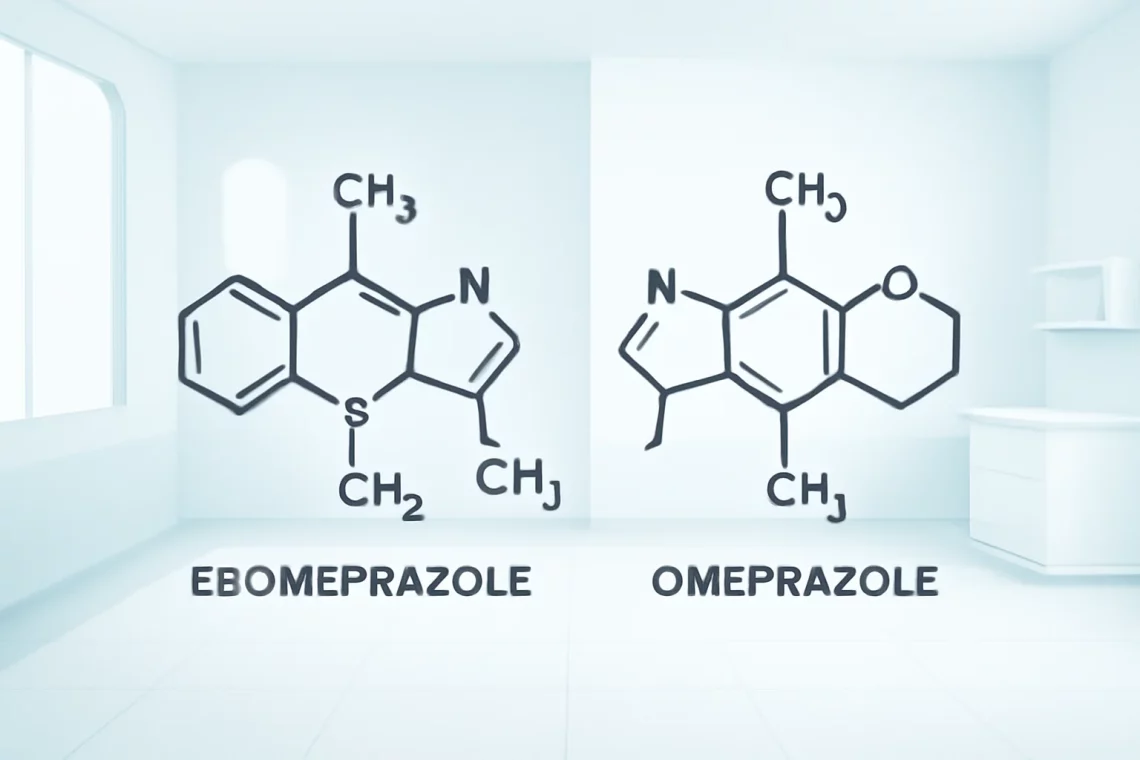
Esomeprazole vs Omeprazole: Which is Right for You?
Esomeprazole and omeprazole are both medications that belong to a class known as proton pump inhibitors (PPIs). These drugs are primarily used to treat conditions related to excessive stomach acid, such as gastroesophageal reflux disease (GERD), peptic ulcers, and Zollinger-Ellison syndrome. With the increasing prevalence of acid-related disorders, the importance of understanding these medications has grown significantly. Esomeprazole, often marketed under the brand name Nexium, is a specific isomer of omeprazole, which means that it has a slightly different chemical structure and may offer distinct pharmacological properties.
Both medications work by blocking the proton pump in the stomach lining, effectively reducing the production of gastric acid. As a result, they help alleviate symptoms such as heartburn, regurgitation, and discomfort associated with acid-related conditions. However, the choice between esomeprazole and omeprazole can often be confusing for patients and healthcare providers alike. With different dosages, side effects, and potential interactions, understanding these nuances is vital for effective treatment. In this article, we will explore the characteristics, uses, and differences between esomeprazole and omeprazole, helping you make an informed decision about which option might be best for your needs.
Understanding the Mechanism of Action
Both esomeprazole and omeprazole function through a similar mechanism to inhibit gastric acid secretion. They achieve this by binding to the proton pump in the parietal cells of the stomach lining. This proton pump is responsible for the final step in the production of gastric acid, hence effectively shutting down acid secretion.
The action begins when these medications are absorbed into the bloodstream and transported to the gastric parietal cells. Once there, they are converted into their active form, which then binds irreversibly to the proton pump. This binding prevents the pump from releasing hydrogen ions, which are essential for the formation of gastric acid. As a result, the overall acidity in the stomach is reduced, leading to relief from symptoms associated with excessive acid production.
While both drugs share this fundamental mechanism, esomeprazole is the S-enantiomer of omeprazole. This means that it has a slightly different molecular configuration, which can affect how the body metabolizes and responds to the medication. Some studies suggest that esomeprazole may provide a more prolonged and potent effect compared to omeprazole, particularly in certain populations or under specific conditions.
This nuanced difference in their mechanisms may lead healthcare providers to choose one drug over the other based on individual patient needs. For example, patients who are not adequately controlled on omeprazole may benefit from switching to esomeprazole, as it may offer improved acid control and symptom relief.
Indications and Uses
Esomeprazole and omeprazole are primarily indicated for the treatment of various acid-related disorders. Their common uses include the management of gastroesophageal reflux disease (GERD), a condition where stomach acid frequently flows back into the esophagus, leading to symptoms such as heartburn and difficulty swallowing. Both medications are effective in reducing the frequency and severity of these symptoms, improving the quality of life for those affected.
In addition to GERD, both drugs are used in the treatment of peptic ulcers, which are sores that develop on the lining of the stomach or the first part of the small intestine. These ulcers can be caused by factors such as Helicobacter pylori infection or the long-term use of nonsteroidal anti-inflammatory drugs (NSAIDs). By decreasing gastric acid production, esomeprazole and omeprazole promote healing and prevent ulcer recurrence.
Furthermore, both medications are utilized in the context of Zollinger-Ellison syndrome, a rare condition characterized by excessive acid secretion due to gastrin-secreting tumors. Here, proton pump inhibitors play a crucial role in managing the excessive acidity that can lead to severe gastrointestinal complications.
While both drugs are effective for these conditions, esomeprazole may be preferred in cases where a more potent acid suppression is necessary or in patients who have shown inadequate response to omeprazole. This individualized approach to treatment helps ensure that patients receive the most appropriate therapy for their specific circumstances.
Side Effects and Considerations
Like all medications, esomeprazole and omeprazole come with a range of potential side effects. While many patients tolerate these medications well, some may experience adverse reactions that warrant attention. Common side effects associated with both drugs include headache, nausea, diarrhea, constipation, and abdominal pain. These effects are generally mild and may resolve with continued use.
However, long-term use of proton pump inhibitors has been associated with more serious concerns. Research suggests that prolonged suppression of gastric acid can lead to an increased risk of gastrointestinal infections, such as Clostridium difficile, due to reduced acidity in the stomach. Additionally, there may be a potential link between long-term PPI use and nutrient malabsorption, particularly of magnesium, calcium, and vitamin B12, which could contribute to deficiencies over time.
Patients should also be cautious about potential drug interactions when taking either esomeprazole or omeprazole. These medications can affect the metabolism of various drugs processed by liver enzymes, which may lead to altered effectiveness or increased side effects of concomitant medications. It is essential for patients to inform their healthcare providers of all medications they are taking to prevent any adverse interactions.
In summary, while both esomeprazole and omeprazole are effective in managing acid-related disorders, awareness of their potential side effects and interactions is crucial for safe and effective use. Patients should engage in open discussions with their healthcare providers regarding their treatment plans to ensure they are receiving the best care possible.
Cost and Accessibility
Cost and accessibility are significant factors for many patients when choosing between esomeprazole and omeprazole. Omeprazole is available as a generic medication, often making it the more affordable option. Many insurance plans cover generic medications, which can further reduce out-of-pocket expenses for patients requiring long-term acid suppression.
On the other hand, esomeprazole, while also available in generic form, may still be priced higher than omeprazole due to its branding and perceived differentiation in efficacy. This cost difference can be a deciding factor for patients who are managing chronic conditions requiring ongoing treatment.
Fortunately, there are various programs available to assist patients with prescription costs, including discount cards, patient assistance programs, and manufacturer-sponsored programs. Patients are encouraged to explore these options, especially if they encounter challenges affording their medications.
Additionally, patients should discuss with their healthcare providers the possibility of switching from esomeprazole to omeprazole or vice versa based on their insurance coverage and financial situation. This collaborative approach can help ensure that patients receive effective treatment without facing undue financial burden.
In conclusion, both esomeprazole and omeprazole serve essential roles in managing acid-related disorders. Understanding their similarities and differences can empower patients to make informed decisions regarding their treatment options.
*This article is not intended as medical advice. For any health-related issues, please consult your healthcare provider.*




